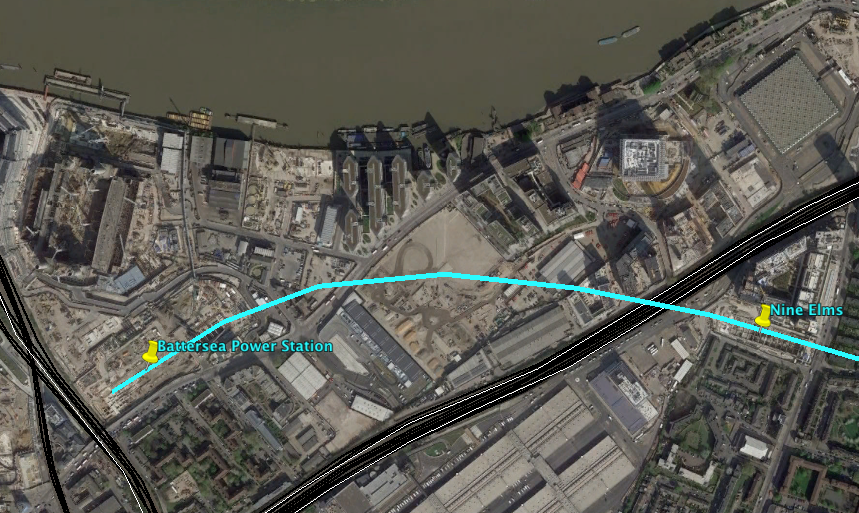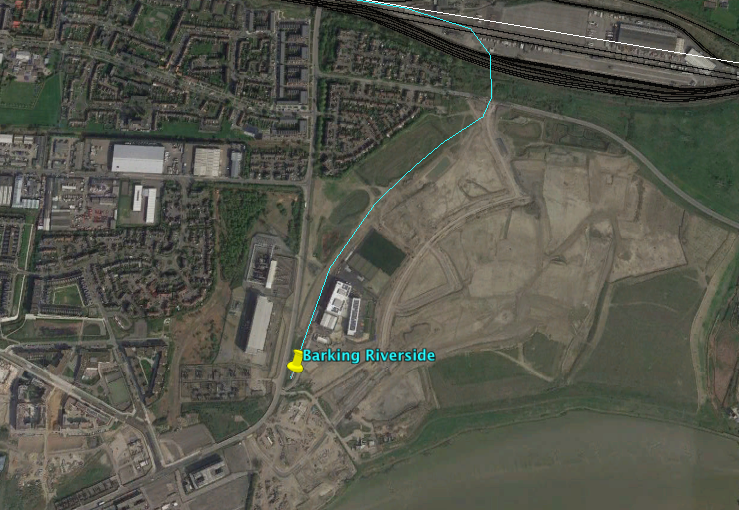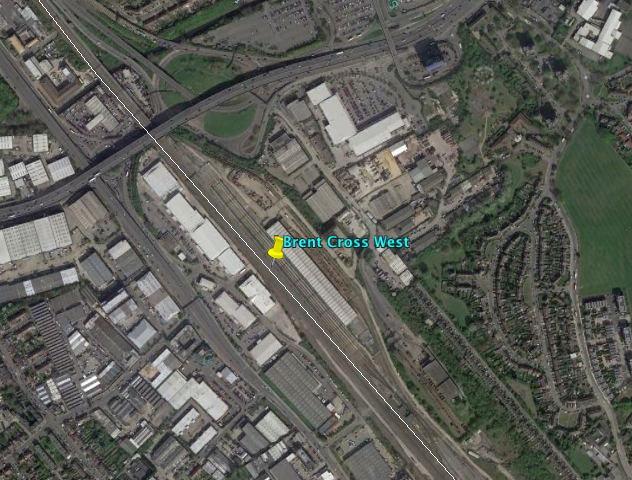This is post #4 of my 9-part Future Step-Free Stations series, focusing on new stations in London to be ready by 2022. You can read the intro post of the series here.
| Station | Line | Scheduled date |
|---|---|---|
| Nine Elms | Northern | 2020 |
| Battersea Power Station | Northern | 2020 |
| Barking Riverside | Overground | 2021 |
| Brent Cross West | Thameslink | 2022 |
These stations will be the newest additions to London’s rail network, and also make up the smallest station group of step-free access works. Considering that the new Elizabeth Line stations are all located at the sites of existing stations (with Woolwich being a short walk from Woolwich Arsenal), these four stations represent the only current short-term efforts to expand the reaches of rail transport into new areas. Indeed, London rail transport as a whole has shifted its focus to optimising the capacity of its existing network. With severe overcrowding on Underground lines and on major inner surburban corridors, adding more stations would only aggravate the situation, and so most of the current work involves installing brand-new signalling (4 Lines Modernisation), rebuilding major stations to increase throughput (London Bridge and Waterloo International), introducing longer trains (Greater Anglia fleet replacement), and redesigning National Rail services (RailPlan 20/20).
However, there are still several corridors where expansion is not only possible but can act as a catalyst for urban regeneration and growth. Nine Elms and Battersea Power Station are part of the Northern Line Extension, which will see the Northern Line gain a second southern branch from Kennington. The Northern line currently has two northern branches (High Barnet and Edgware), two central branches (Bank and Charing Cross), but only a single southern branch to Morden. And so, the extension allows the line to rebalance itself, while serving Central London’s newest regenerated neighborhood, Nine Elms. In the future, there are plans to further extend the line out to Clapham Junction.
 Map of Nine Elms construction and the location of the future stations
Map of Nine Elms construction and the location of the future stations
Barking Riverside will be the new terminus for the Overground’s Gospel Oak to Barking line, informally known as the GOBLIN. Being an outer orbital line with a modest 4 trains-per-hour frequency, there is plenty of capacity for the line to reach the new development at Barking Riverside. Indeed, longer-term plans envision the line crossing the Thames into Thamesmead and meeting the Elizabeth Line at Abbey Wood.
 Map of Barking Riverside area and the location of the future station
Map of Barking Riverside area and the location of the future station
Finally, Brent Cross West will be an infill station on the Thameslink route between Cricklewood and Hendon, serving the new Brent Cross redevelopment. In addition to serving the local Thameslink services, in the future, this station will be on a new Overground line, the West London Orbital Line, from Hendon/West Hampstead down to Hounslow, with several new stations opening along the route.
 Map of Brent Cross and the location of the future station
Map of Brent Cross and the location of the future station
You can now see that despite the small number of new stations planned by 2022, there is still a logical plan to expand the network where feasible. One major elephant in the room, however, is the delayed/deferred/cancelled? Metropolitan line extension to Watford Junction. The extension, initially due to open in 2020, is mired in local politics and rising costs, making it impossible at this stage to know if/when it will be built. If it does get built, there will be two new stations, Cassiobridge and Watford Vicarage Road.
Although this blog series focuses on projects up until 2022, some of the major expansions planned beyond then are worth a quick mention. The Bakerloo line is gearing up for a long-awaited expansion to the southeast by 2029, bringing the Underground to Lewisham and possibly taking over some National Rail branches. Further ahead in the future, Crossrail 2, connecting the southwest with the northeast, will be ready by the early 2030’s. Connecting the Elizabeth Line, the Overground, and a future High Speed 2, a series of infill stations will be built at Old Oak Common by 2026, acting as West London’s version of Clapham Junction and Stratford.
New stations are meant to be built to the latest accessibility standards, which includes step-free access to all platforms. Staffing and level boarding, however, are not always guaranteed, as seen with the recently-opened Lea Bridge station. And so, with regards to the degree of accessibility, the Northern line stations will most likely have level boarding, as many of its existing step-free stations do. With Barking Riverside, it is not clear if there will be level boarding. On the one hand, the station will only be served by the Overground and have no freight trains passing through. But on the other hand, none of the other GOBLIN stations have level boarding, so there may not be enough justification to provide level boarding at one station. If the redevelopment of nearby West Hampstead Thameslink is anything to go by, Brent Cross West will probably not have level boarding, as both freight and long-distance trains will pass its platforms at full speed.
Reaching the midpoint of my 9-part series, the next post deals with the Mayor of London’s ambitious plan to bring step-free access to the outer suburbs.

What’s the issue with freight and long distance trains and level boarding?
The main problem is that there is a real risk that if a platform is raised to accommodate level boarding for a particular rolling stock, that other trains might “foul” the platform, which means that part of the train will hit the platform edge. As trains in the UK are currently not all standardised in terms of specific train floor height and width, what might work for one type of train will not work for another. Freight trains are particularly bulky in size and may be especially susceptible to fouling. Also, long-distance trains exhibit significant lateral movement as they pass full-speed through a platform, meaning that they may still hit the raised platform even if an identical slower-travelling train had cleared the platform. And so, raising platforms would be followed by offsetting the platform length, setting it further back. This would then increase the overall gap and make level boarding useless. This is of course all ridiculous and shows terrible planning from the rail industry and shows the need to standardise all future rolling stock. You can read more on the subject in the following link: https://www.rssb.co.uk/pticontent/pti041-2015-01-platform-train-interface-strategy.pdf
I Think Watford High Street Railway Station Should be Step Free Access in the future. Not only that. I Think There Should be some Brand New Toilets at the Station as well.